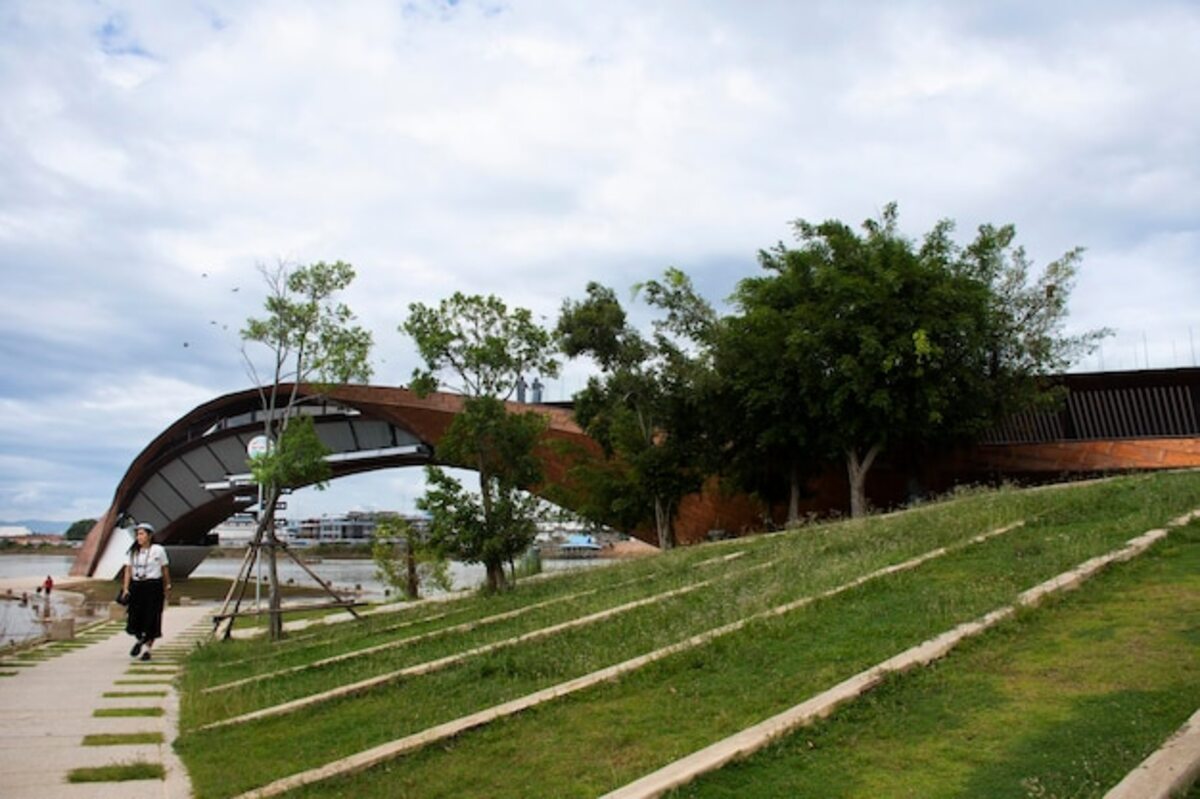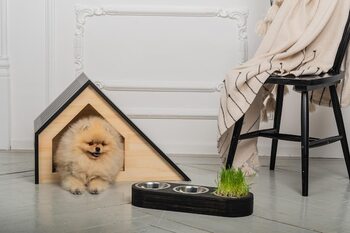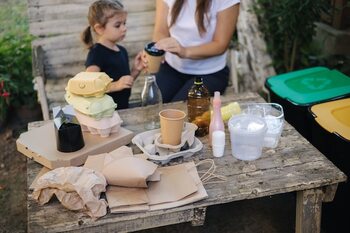Urban spaces: designing shelters of well-being and style

Urban spaces: designing shelters of well-being and style is an invitation to rediscover our cities as environments that promote harmony and comfort. In a world where hustle and stress are the norm, it is essential to create places that are not only functional but also reflect our personal style and foster our well-being. Through this article, we will explore how to transform urban spaces into true havens that nurture our quality of life without sacrificing aesthetics. Get ready to be inspired!
The importance of urban design in quality of life
Urban design plays a crucial role in the quality of life of a city's inhabitants. A well-planned environment not only facilitates mobility and access to services but also creates spaces where people can interact, relax, and enjoy their surroundings. The integration of green areas, public squares, and pedestrian paths contributes to a healthier atmosphere, encouraging outdoor activities and promoting an active lifestyle. These elements help reduce stress and improve emotional well-being, making cities more pleasant places to live.
Moreover, urban design has a significant impact on social cohesion and the sense of community. Well-designed spaces invite togetherness, allowing citizens to gather and share experiences. By incorporating public art, local markets, and areas for community events, the social fabric is strengthened and a sense of belonging among residents is fostered. This approach not only enhances individual quality of life but also creates safer and more vibrant environments where everyone can thrive. Ultimately, thinking of urban design as a tool to elevate our well-being is essential for building cities that truly reflect our needs and aspirations.
2. Essential elements for a welcoming urban space
To achieve a welcoming urban space, it is essential to integrate elements that promote both functionality and aesthetics. Starting with furniture, opting for comfortable benches and suitable tables for enjoying moments outdoors can transform a square or a park into a place where people feel invited to relax. Additionally, the inclusion of green areas, such as vertical gardens or small community gardens, not only beautifies the environment but also improves air quality and provides a natural refuge amidst urbanization. These elements encourage citizens to interact with their surroundings in a more mindful and healthy way.
Lighting plays a crucial role in creating welcoming atmospheres. Using soft, warm lights in public spaces helps foster a sense of safety and well-being during nighttime hours. Incorporating lamp posts with attractive designs or LED lighting systems that highlight architectural elements can make these spaces both functional and aesthetically pleasing. Finally, promoting cultural or recreational activities through artistic installations or temporary stages can attract the community and bring the area to life, transforming every corner into a dynamic refuge where everyone can feel part of their urban environment.
3. Integrating nature in urban environments: the power of green
The integration of natural elements in urban environments not only beautifies the landscape but also plays a crucial role in enhancing the well-being of its inhabitants. Incorporating green areas, such as vertical gardens, green roofs, and accessible parks, creates spaces where people can disconnect from the fast pace of city life. These pockets of nature allow citizens to enjoy moments of tranquility and relaxation, fostering stress reduction and promoting a deeper connection with the natural environment. In this way, cities transform into refuges that nurture both the body and the mind.
Moreover, the power of green goes beyond aesthetic appeal; it also helps improve air quality and mitigate the "heat island" effect characteristic of densely populated urban areas. Planting trees and creating community gardens not only beautifies our streets but also fosters a sense of community by involving residents in their care and maintenance. The social interaction that arises in these green spaces can strengthen community bonds and provide a sense of belonging among residents. In this way, integrating nature into our urban environments becomes a powerful tool for designing spaces that are not only visually pleasing but also promote a healthy and balanced lifestyle.
4. Multifunctional spaces: adaptability and style in one
In an urban environment where space is a precious resource, the creation of multifunctional spaces becomes a key strategy to maximize both functionality and style. These versatile environments allow a single area to serve various functions: from being a cozy living room for entertaining friends to transforming into a temporary office or even a personal gym. By integrating modular furniture and smart storage solutions, residents can adapt their homes to the changing needs of daily life, achieving a perfect balance between comfort and practicality.
Adaptability not only translates into efficiency but also offers the opportunity to express our personality through design. Incorporating decorative elements that are functional, such as shelves that act as space dividers or foldable tables that turn into desks, allows for maintaining an attractive aesthetic without sacrificing style. Additionally, by choosing neutral color palettes combined with vibrant accents, any corner of the home can be brought to life, transforming it into a refuge where every square meter counts and reflects the essence of those who inhabit it. With these creative approaches, multifunctional spaces emerge as true urban oases that promote well-being and celebrate individuality.
5. How to choose furniture and decorations for urban outdoors
When choosing furniture and decorations for urban outdoor spaces, it is essential to consider functionality and aesthetics. In an environment where space can be limited, opting for multifunctional pieces that offer storage solutions or can be adapted for different uses can maximize the utility of the area. Additionally, options for weather-resistant materials are essential to ensure the durability of your furniture. Treated wood, galvanized metal, and recycled plastics are excellent choices that combine strength with attractive design. Also, remember the importance of colors and textures; these can influence the overall atmosphere, creating a cozy and harmonious space.
Decoration also plays a crucial role in creating urban retreats. Incorporating elements like plants, colorful cushions, or outdoor rugs not only adds warmth to the space but also helps to personalize it according to your style. Vertical planters are an excellent option for making use of vertical space, while warm LED lights can transform a terrace or balcony into a magical place during the evenings. The key is to find a balance between comfort and aesthetics, selecting pieces that reflect your personality while also fostering a relaxing environment where enjoying the outdoors is a true wellness experience.
6. The art of creating rest areas in the city
The art of creating relaxation zones in the city involves a conscious approach to the planning and design of spaces that invite relaxation and enjoyment. In the midst of urban hustle, it is essential to identify areas where people can disconnect, whether through comfortable benches in parks, vertical gardens, or even small corners with soft lighting and natural elements. Incorporating elements such as water, plants, and cozy seating not only enhances the aesthetics of the place but also contributes to a serene environment that promotes physical and mental well-being. The key is to find a balance between functionality and beauty, creating spaces that are accessible refuges for everyone.
In designing these rest areas, it is important to consider the diversity of users who may enjoy the space. From families to professionals seeking a moment of tranquility during their workday, each corner should be inclusive and adaptable to different needs. The implementation of modular and versatile furniture can facilitate this flexibility. Aspects such as sustainability and the efficient use of local resources should also be considered to foster a deeper connection with the environment. By doing so, we are not only creating pleasant places to rest but also building more cohesive communities where each individual feels valued and inspired by their urban environment.
7. Urban lighting: creating magical atmospheres at night
Urban lighting plays a fundamental role in creating magical atmospheres that transform our cities at night. As the sun sets, strategically placed lights not only illuminate pathways and squares but also evoke feelings of warmth and security. Sleek street lamps, spotlights that highlight architectural elements, and luminous art installations can turn common spaces into true nighttime havens, inviting citizens to explore their surroundings with a new perspective. The right light can accentuate the beauty of historic buildings, create intriguing shadows in parks, and bring deserted streets to life.
In addition to its aesthetic function, good lighting contributes to emotional well-being by creating a cozy environment. Soft, warm lights invite contemplation and encourage social interactions, while brighter light can energize public spaces and promote nighttime activities. By integrating sustainable technologies like LED and smart control systems, cities can optimize their energy consumption without sacrificing visual impact or functionality. Thus, urban lighting not only beautifies the nighttime landscape but also becomes a key element in designing urban refuges where every corner breathes well-being and inspiration.
8. Sustainability in urban design: beyond style
Sustainability in urban design goes beyond aesthetic trends; it is about creating spaces that respect and preserve the natural environment while meeting the needs of its inhabitants. Integrating elements such as green areas, water management systems, and eco-friendly materials not only beautifies the urban landscape but also contributes to the health of the environment. By incorporating sustainable practices, designers can transform cities into havens where biodiversity thrives and communities feel connected to nature. The deliberate choice of native plants and green roofs can help mitigate the heat island effect in urban settings, promoting a cooler and more pleasant climate for all.
Additionally, it is essential to consider how these sustainable designs can positively impact quality of life. A well-designed urban space should encourage social interaction and offer opportunities for outdoor activities, contributing to mental and emotional well-being. Pedestrian zones, bike paths, and public squares invite citizens to leave their homes and enjoy the surroundings. In this way, not only are aesthetically pleasing spaces created, but an active and healthy lifestyle is also promoted. In summary, sustainability in urban design is a powerful tool for cultivating vibrant communities where every individual can thrive.
9. Success stories: inspiring examples of urban shelters around the world
Urban shelters have taken center stage in various cities around the world, becoming inspiring examples of how it is possible to merge well-being and design. In Tokyo, for example, the "Shinjuku Gyoen" project stands out for its meticulous landscaping, offering citizens a natural escape amidst the frantic urban pace. This park not only serves as a green lung, but it has also become a space where people can meditate, have picnics, or simply enjoy the beauty of its gardens. The integration of natural elements within the urban environment has proven to be an effective formula for promoting the mental and physical health of those who visit.
Another emblematic case can be found in Copenhagen with "Superkilen," a public park designed to celebrate the cultural diversity of its inhabitants. This multifunctional space combines art, sports, and recreational areas, all under an inclusive approach that invites the community to actively participate. Each section of the park reflects different cultures through its facilities and decorations, thus creating a vibrant refuge where people can connect with each other and their surroundings. These examples are tangible proof that it is possible to transform urban spaces into oases of well-being that not only serve a practical function but also enrich our daily experience of living in the city.



